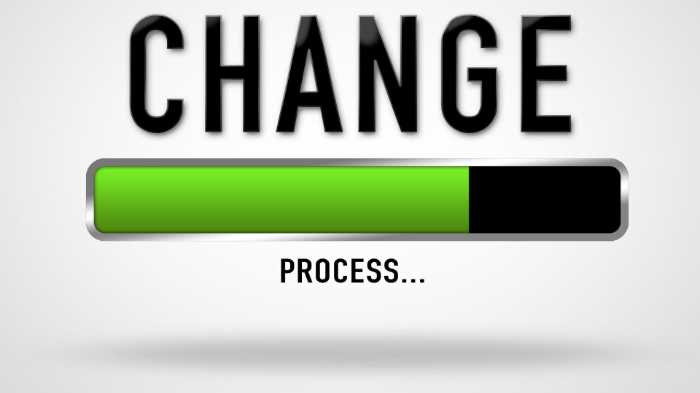
In order to make changes within an organization, it is often necessary to get buy-in from the people who will be affected by those changes. This can be a difficult task, but it’s important to remember that change is not easy for anyone. In this blog post, we will discuss some tips for getting buy-in and changing processes to better meet the needs of your organization.
How do you determine organizational needs?

There are a few ways to determine organizational needs:
Hold meetings with key stakeholders and department heads to get a sense of what they believe the organization’s priorities should be.
Conduct surveys or polls of employees, customers, or other relevant groups.
Review data such as financial reports or sales figures to identify areas that may need improvement.
Once you have gathered this information, you can start to develop a plan for addressing the needs of the organization.
What is a change process?

Any organization, whether for-profit or nonprofit, goes through changes. Some changes are small, like adding a new product line or updating the company website. Others are more significant, like relocating the business or changing the company structure.
No matter the size of the change, it’s important to have a clear and concise plan for how to implement it. Here are four steps to help you get buy-in and change processes for organizational needs:
1. Identify the need for change
The first step in any change process is identifying the need for change. This can be prompted by external factors such as a change in the market or new regulations. Alternatively, it can be internally motivated by issues such as declining productivity or increased turnover.
Assessing the need for change involves an analysis of the current situation and an identification of the gap between the current state and the desired future state. This step also requires a clear understanding of the organization’s goals and objectives.
2. Gather data and feedback
It is important to gather data and feedback that supports your proposed solution. This data can come from a variety of sources, including employees, customers, and market research. Feedback should be gathered at each stage of the process, from initial planning through implementation and evaluation.
By taking the time to collect this data and feedback, you can develop a more comprehensive understanding of the situation and create a stronger case for your proposed solution. In turn, this increases the likelihood that your proposed change will be successfully implemented.
3. Develop a plan
Once the need for change has been identified and the required data has been collected, organizations must develop a plan for how to best implement the change. This involves setting goals, designing initiatives, and allocating resources.
The plan should detail how the organization will transition from its current state to the desired future state. It should also include timelines, milestones, and accountability measures.
4. Implementation
The next step is to implement the changes, which typically involves some form of communication to alert employees of the upcoming changes.
This stage of the process typically requires organizational changes, such as new policies or procedures, new roles, and responsibilities, or changes to physical structure.
5. Evaluate the results
Once the changes have been made, it is important to evaluate the results against the original goals and objectives. This step allows organizations to make necessary adjustments and ensure that they are on track to achieve their desired future state.
6. Get buy-in from key stakeholders and employees.
Whenever an organization undergoes a change process, it’s crucial to create buy-in from key stakeholders and employees. Without this buy-in, the chances of the organizational change being successful and the organizational needs being fulfilled are greatly diminished.
There are a few different ways to go about getting buy-in from key stakeholders and employees. One way is to hold informational meetings to explain the proposed changes and answer any questions that people may have.
Another way is to solicit feedback from employees and use this feedback to make adjustments to the proposed changes. Regardless of the approach that is taken, it’s important to make sure that key stakeholders and employees are on the same page with the process. Creating buy-in from these groups is essential for ensuring a successful transition and eliminating other concerns.
How does the change benefit the organization?

Any time an organization undergoes a change, there is always the potential for benefit or detriment. To maximize the chances of a successful outcome, it is important to carefully consider how the change will impact the different facets of the organization. Will it improve efficiency? Increase productivity? Enhance customer satisfaction?
While the change process can be disruptive, it also provides numerous benefits. A well-executed change can lead to increased profitability, higher employee morale, and improved customer satisfaction. It can also help an organization to become more agile and responsive to market changes. In short, organizational change is essential for any organization that wants to stay competitive. While the process can be difficult, the benefits are well worth the effort.
How does an idea develop?
An idea develops over time through a process of refinement and testing. In the early stages, an idea is usually fairly broad and general. As it is developed further, it becomes more specific and focused. This process of refinement can involve different people, each contributing their own ideas and perspectives.
Once an idea has been fully developed, it can be implemented as a plan or course of action. This may require still more refinement and testing before it is finally put into practice. But the process of developing an idea is an essential part of bringing about change in organizations.
Conclusion
An organization’s ability to successfully undergo change is essential for its survival in today’s competitive marketplace. The process of change can be difficult, but the benefits are well worth the effort. In order to maximize the chances of a successful outcome, it is important to carefully consider how the change will impact different facets of the organization. Creating buy-in from key stakeholders and employees is essential for ensuring a smooth transition. By following these tips, you can help your organization make necessary changes and achieve its desired future state.
FAQs

Why is Harvard Business School famous for producing business leaders?
Harvard Business School is widely recognized as the leading producer of business leaders. The school’s focus on leadership and decision-making, combined with its rigorous academic program, ensures that its graduates are well-prepared to meet the biggest challenges of today’s business world.
In addition, the school’s close ties to the business community provide its students with an invaluable network of contacts. The combination of these factors makes Harvard an ideal choice for those seeking to pursue a career in business.
What is Maslow’s hierarchy?
Maslow’s hierarchy is a well-known theory in psychology that suggests that people have certain needs that must be met in order for them to reach their full potential. The hierarchy is often depicted as a pyramid, with the most basic needs at the bottom and the need for self-actualization at the top.
Why do we need a change?
We need organizational change when our current skills and processes are no longer aligned with our team’s vision and goals. Change brings new challenges and benefits that help us learn and grow closer to our end goal which is not possible if things are left unchanged.
When people understand and support the change, it is more likely to be successful. Creating a learning environment for the team where people feel safe to experiment with new ideas is essential for organizational needs.
